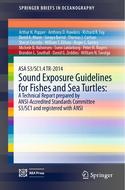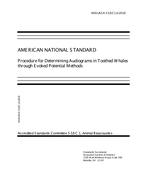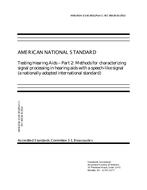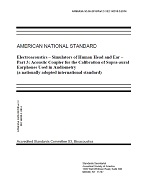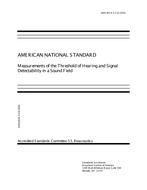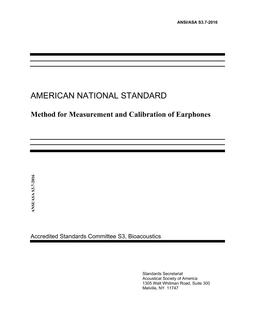Description
In many countries, legislation requires the assessment of sound-producing activitiesthat may have an impact on animals in the aquatic environment (TNO 2011 ; Johnson2012 ; Lewandowski et al. 2012 ; Tasker 2012 , 2015 ; Dekeling et al. 2015 ; Gedamkeet al. 2015 ). There is also often a requirement to prepare environmental assessmentsor statements that can lead to mitigation measures and/or restrictions for proposedactivities. Because few scientifi c data are available regarding the effects of sound,particularly for fi shes and sea turtles, assessment procedures and subsequent regulatoryand mitigation measures are often severely limited in their relevance and effi cacy.This creates uncertainty among all stakeholders as to how sound-producing explorationand operations should proceed.
In 1998 the U.S. National Oceanic and Atmospheric Administration (NOAA)convened an international panel of experts to prepare noise exposure guidelinesfor marine mammals. NOAA?s intent was to provide its regulatory staff with themeans of issuing permits on underwater noise production based on a set of organizedprinciples and facts instead of on a case-by-case basis. The aim was toreduce regulatory uncertainty for all stakeholders by replacing precaution withscientifi c facts. The panel?s initial guidelines appeared in a seminal paper (Southallet al. 2007 ).
In 2004, NOAA convened a similar panel to develop noise exposure criteria forfi shes and turtles with the same goals in mind. It included three members of themarine mammal panel (WTE, RLG, and BLS) for continuity. When NOAA?ssupport for this effort ended in 2006, the panel was organized as a WorkingGroup (WG) under the ANSI-Accredited Standards Committee S3/SC 1, AnimalBioacoustics, which is sponsored by the Acoustical Society of America.
In addition, this Working Group, through its own efforts, obtained external fundingfor the project (see Acknowledgements). The Working Group met eight timesbetween 2004 and 2010. It gathered and reviewed papers from both the peer-reviewand grey literature that presented data on the exposure of fi sh and sea turtles tovarious sound sources. Subsequent smaller meetings were held from 2011 to 2013to review and fi nalize this manuscript. During that time, fi ndings were updated andthe revised document was continuously reviewed by the whole Working Group. Theguidelines presented here are primarily based on data in the peer-reviewed literatureup until mid-2013.
These Guidelines represents the Working Group?s consensus efforts to establishbroadly applicable sound exposure guidelines for fi shes and sea turtles across thecomplete range of taxa and sound types, and to consider many impacts, rather thanjust injury. The Working Group adopts some of the general approaches used to setsound exposure guidelines for marine mammals (Southall et al. 2007 ). However,several factors make the present Guidelines differ in format and conclusions fromSouthall et al. ( 2007 ). These factors include:
1) There are more than 32,000 species of fi sh compared to about 130 species ofmarine mammals;
2) Fishes are much more diverse anatomically, physiologically, ecologically, andbehaviorally than are marine mammals;
3) Most fi shes respond to the particle motion component of sound waves whereasmarine mammals do not;
4) Relatively few papers link exposure to effects in fi shes; and
5) While there are few species of sea turtles, so little is known about their hearingand the role of sound in their lives that it is very diffi cult to establish guidelinesfor these species.
These guidelines are not intended to be a complete review of the literature. Rather,the material cited is limited to those publications that provide background to helpexplain how and why the guidelines were selected. Readers interested in more completereviews are directed to references mentioned in Chap. 1.2 . As in Southall et al.( 2007 ), this report does not consider the commercial, societal, and practical considerationsof the conclusions reached. Instead, these Guidelines serve as the fi rst stepin setting guidelines that may lead to the establishment of exposure standards forfi shes and sea turtles.
Product Details
- Published:
- 04/20/2014
- ANSI:
- ANSI Approved
- Number of Pages:
- 87
- File Size:
- 1 file , 1.7 MB

